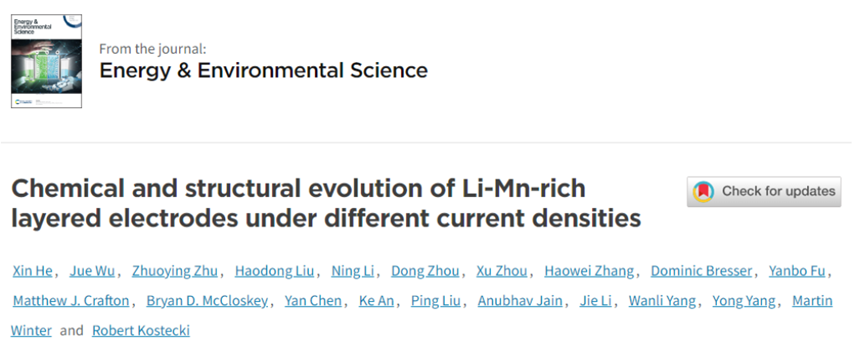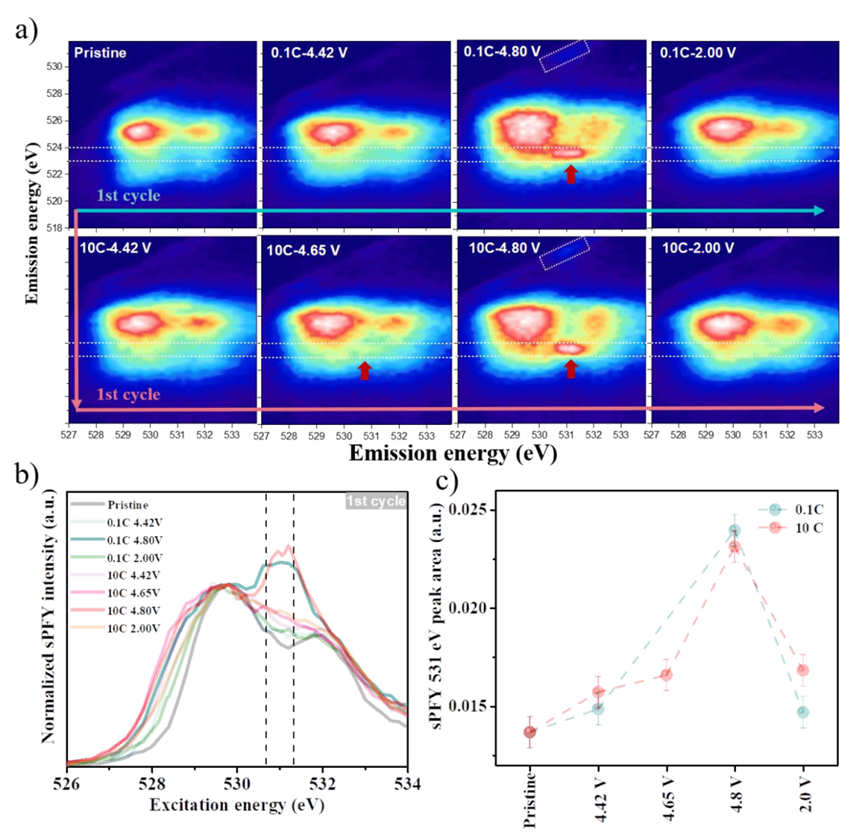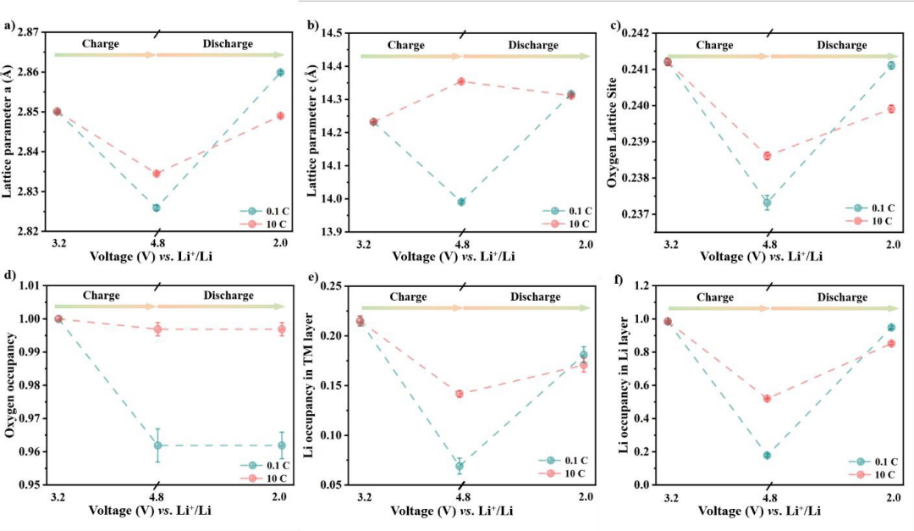Xin He, a research fellow of theSchool of Chemical Engineering and the College of Electrical Engineering, and Robert Kostecki of Lawrence Berkeley National Laboratory in the United States studied the oxidation states of transition metals (TMS) and oxygen in Li-rich materials under different currents, and compared their redox activities. They proposed a detailed mechanism of structural changes from Li octahedron to Li tetrahedron, as well as the role of oxygen vacancies in li+ diffusion. The research results were recently published under the title of “Chemical and Structural Evolutions of Li-Mn-rich Layered Electrodes Under Different Current Densities” in Energy & Environmental Science. Xin He is the co first author and co corresponding author of this article, and the School of Chemical Engineering is the work unit of the first author.
“Although the two active redox centers in Li-rich cathodes, including the anionic and cationic contributions, can enable Li-ion batteries to achieve outstanding specific energy, their behaviors at different current densities have not been clarified. Here, we provide a comparative study of the transition metals (TMs) and oxygen redox activities by directly accessing their oxidation states in Li-rich materials operated at very different current rates. Our data reveal the oxidation of oxygen in the near-surface region is at the same level for electrodes cycled with a wide range of current rates, indicating a reaction gradient of lattice oxygen redox reactions. The oxidation process of lattice oxygen is found to be dynamically compatible with that of the TMs. Combining the results of first principles calculations and complementary experimental findings, we propose a detailed mechanism of structural distortion from octahedral Li to tetrahedral Li and the role of oxygen vacancy in Li+ diffusion. It is found that fast delithiation occurring at high current densities can easily cause local structural transformation, leading to a limited Li+ diffusion rate and consequently suppressing rate capability.”(abstract)


Figure 1. a) mRIXS mapping of LMR NCM electrode under different SOCs in the first circle; b) The sPFY diagram in the emission energy window corresponding to 530.7-531.3ev; c) Peak area change of oxygen oxide at 0.1C and 10C.
It is worth noting that although mRIXS detects the non surface signal of lattice oxide oxygen, its probe depth is more than 100nm. According to the test results of sXAS, mRIXS-sPFY and neutron diffraction (Fig. 2), several important problems were solved from the comparison between 0.1C and 10C. Additionally, at high charge / discharge rates, oxygen is activated below the high voltage platform. The team also compared the relative energy of oxygen vacancies in different local environments.

Figure 2. refine the test results of full charge / discharge state at 0.1C and 10C: a) the lattice parameter a; b) Lattice parameter C; c) Lattice oxygen position, d) oxygen occupation rate; e) Li occupancy in TM layer; f) Li occupancy in Li layer.
https://doi.org/10.1039/D2EE01229D
